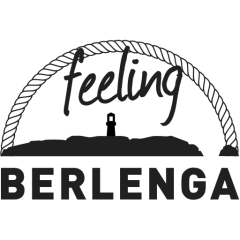Take advantage of Feeling Berlenga® ‘s tours around the island to observe and photograph this biodiversity of plants. Do not hesitate to ask our guide for help to identify any of the plants.
Endemic plants only found in the Berlengas archipelago:
- Berlengas Armeria (Armeria berlengensis) – Very easy to identify, shaped like a cushion with unique flowers;
- Berlengas Pulicaria (Pulicaria microcephala) – A small and very branched plant;
- Berlengas Rupturewort (Herniaria berlengiana) – A small plant shaped like a rosette that grows in cracks, and has succulent leaves (protection against high salinity);
- Echium (Echium rosulatum) – An endemic subspecies to the Berlengas (Echium rosulatum davei), which is easy to identify owing to its purple flowers.
Endemic to the Iberian Peninsula. In Portugal, these plants can only be found in the Berlengas:
- Portuguese angelica (Angelica pachycarpa) – With large green, dark and shiny leaves, it is quite branched and can reach 1 m in height.
Plants endemic to the Iberian Peninsula:
- Iberian calendula (Calendula suffruticosa) – Widely distributed throughout the islands of the Berlengas archipelago.
- Petticoat daffodils (Narcissus bulbocodium) – Yellow flower;
- Linaria (Linaria amethystea) – Flowering plant. Flowers can be blue-violet, yellow or white.
- Figwort (Scrophularia sublyrata) – In the Berlengas, its leaves are more fleshy for protection against the high salinity.
Plants with a wider geographic distribution that are also present in the Berlengas archipelago:
- Pink campion (Silene scabriflora) – Small perennial herbaceous plant, which can form inflorescence with 5 to 9 pink flowers.
- White campion (Silene latifólia) – Flowering plant with white flowers. The specimens found in the Berlenga Islands are smaller, compact and have thick leaves.
